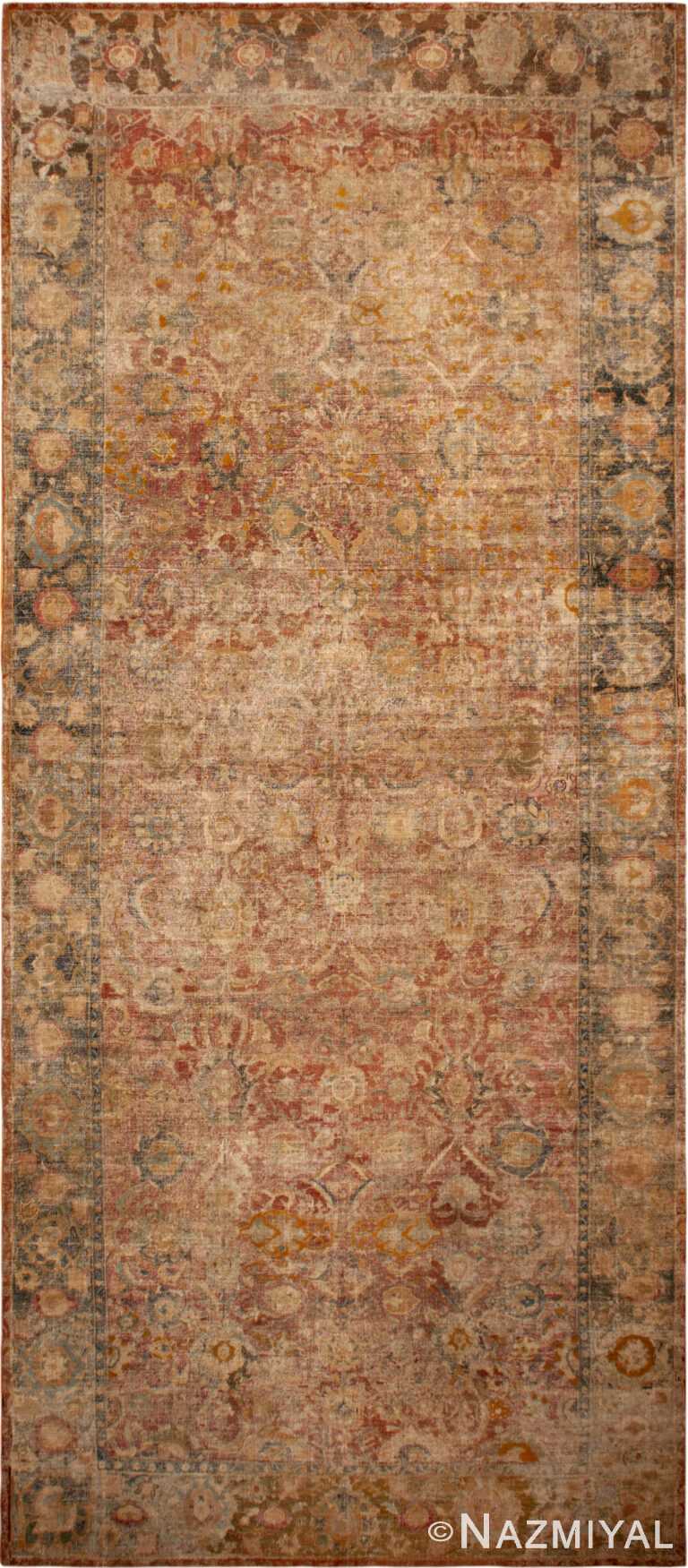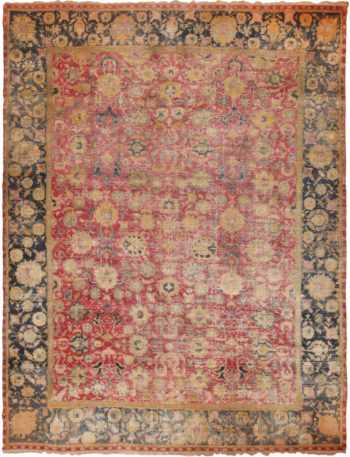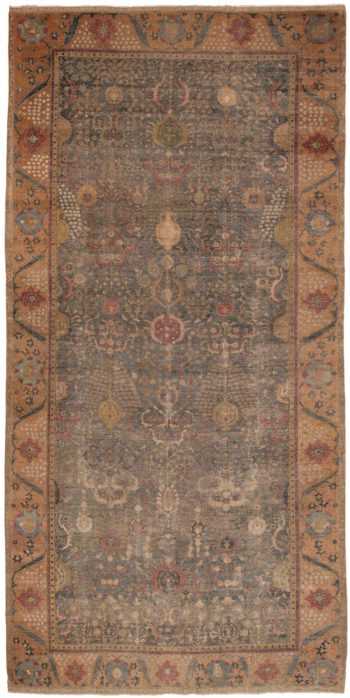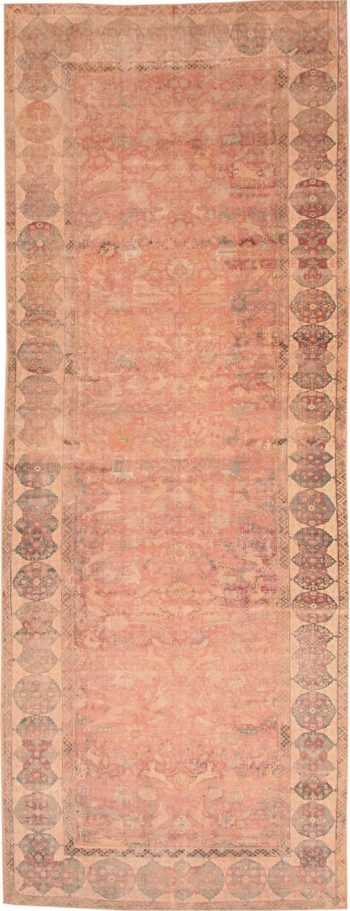17th Century Antique Persian Isfahan Gallery Size Rug 72915
Rare and Collectible 17th Century Antique Persian Isfahan Gallery Size Rug, country of origin: Persia, Circa date: 17th Century – Step back in time to the opulent courts of 17th century Safavid Persia. Here, exquisite carpets adorned palaces and grand homes. These weren’t mere floor coverings; they were coveted works of art – antique Persian Isfahan rugs. These magnificent textiles, born from a rich artistic heritage and imbued with symbolic meaning, continue to captivate us today. Let’s delve into the world of Isfahan rugs, exploring their historical context, design features, and enduring legacy.
The 17th century marked a golden age for Persian rug making, particularly in the city of Isfahan. The Safavid dynasty, renowned patrons of the arts, established Isfahan as the imperial capital and a flourishing center for artistic production. Under their patronage, skilled rug weavers perfected their craft, pushing the boundaries of design and technique. Isfahan rugs became synonymous with unparalleled quality, intricate detail, and lavish materials.
Antique Persian Isfahan rugs are a visual feast. They typically feature a central medallion, often a geometric design or a stylized floral motif. The field surrounding the medallion is filled with intricate arabesque patterns, a hallmark of Islamic art. These swirling floral and vine designs are rendered in a dazzling array of colors. Reds, blues, greens, and golds interweave, creating a sense of depth and dynamism. The meticulous attention to detail is breathtaking, with each knot contributing to the rug’s overall magnificence.
The beauty of Isfahan rugs goes beyond their visual appeal. Many design elements hold symbolic meaning. The central medallion could represent the heavens or a garden paradise. Floral motifs might symbolize fertility, abundance, or paradise. Interlacing vines could represent the interconnectedness of all things. By understanding these symbols, we gain a deeper appreciation for the cultural and religious significance these rugs held for their makers and owners.
Isfahan rugs were not just enjoyed within the confines of Persian palaces. They became a coveted luxury item, traded along bustling trade routes. European dignitaries and wealthy merchants sought to possess these exquisite carpets, a symbol of status and refined taste. Isfahan rugs became a bridge between East and West, fostering cultural exchange and influencing artistic movements in Europe.
Today, 17th century antique Persian Isfahan rugs remain highly sought-after collector’s items. They are not just beautiful works of art; they are historical artifacts whispering tales of a bygone era. By appreciating the craftsmanship, symbolism, and historical context woven into these magnificent rugs, we gain a deeper understanding of Persian art, culture, and the enduring power of human creativity. These captivating textiles continue to grace museums and private collections, serving as a testament to the artistry and opulence of the Safavid era.






















